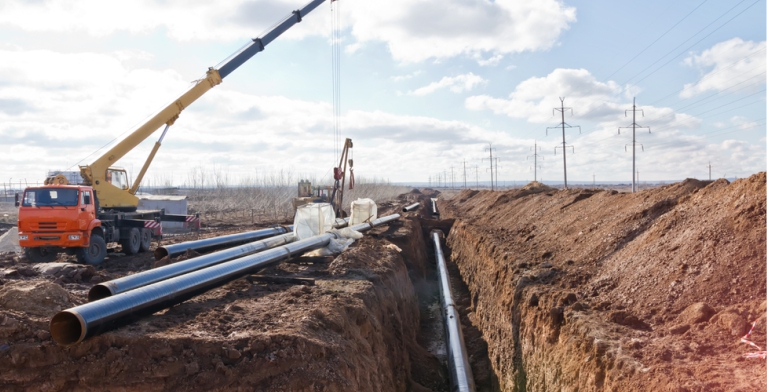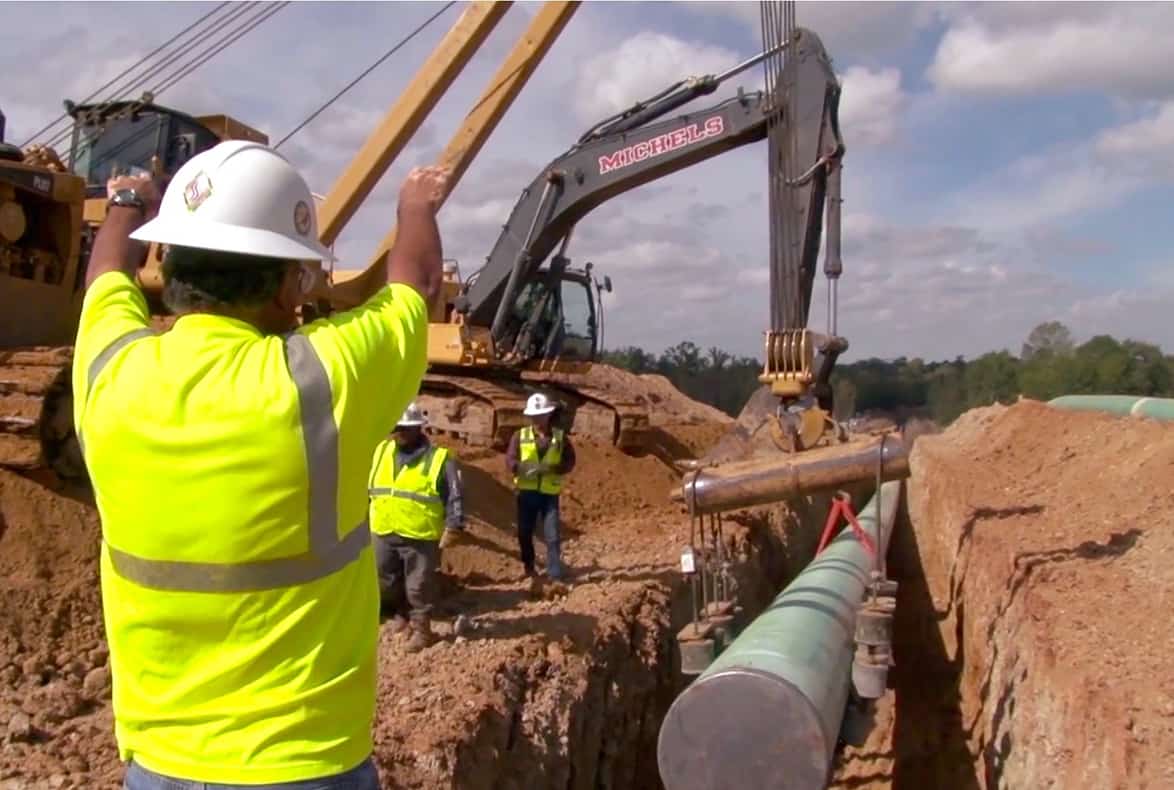The Benefits of Underground Work With Creek Pipe trenching services
What You Need To Find Out About Pipe Trenching Providers: An In-depth Review of Available Options
Pipe trenching services are important for the installment and maintenance of underground utilities. They include various techniques tailored to specific demands and settings. Understanding these approaches is crucial for reliable task implementation. Each option offers its very own collection of benefits and obstacles. As the demand for effective utility administration boosts, understanding what to think about when picking a trenching service comes to be vital. What factors should one prioritize to assure success?
Understanding Pipe Trenching: What It Is and Why It Issues
Although typically overlooked, pipe trenching is an important procedure in numerous building and construction and utility tasks. This method involves digging deep into narrow trenches to facilitate the setup of pipes for water, gas, sewer, and telecommunications. The relevance of pipe trenching lies in its function in ensuring that these important systems are appropriately integrated into infrastructure, enabling the secure and effective distribution of necessary services.Proper trenching is essential for maintaining the integrity of pipelines and minimizing risks connected with dirt erosion and collapses. It also enables reliable inspections and upkeep of underground utilities. Furthermore, recognizing the local guidelines and environmental factors to consider is critical, as inappropriate trenching can cause expensive hold-ups and lawful problems. Inevitably, pipe trenching functions as the fundamental action that sustains numerous building and construction endeavors, making it a significant aspect of contemporary facilities development.
Usual Trenching Methods for Below Ground Energies
In the domain name of underground utilities, various trenching methods play a crucial function in installment and upkeep - Creek Pipe contact. The open-cut trenching method, directional monotonous strategy, and hydro excavation procedure each offer special advantages depending upon the specific job requirements. Understanding these approaches is crucial for efficient and effective energy monitoring
Open-Cut Trenching Technique
Open-cut trenching is a widely utilized method for setting up below ground utilities, specifically when the depth and width of the trench permit efficient access. This strategy includes excavating a trench along the proposed path of the utility, providing straight exposure and availability for installation. It is specifically advantageous for tasks that need considerable excavation, as it promotes fast installment and examination. However, it also requires cautious planning to minimize disturbance to the surrounding location, including web traffic and existing structures. Open-cut trenching is most efficient in open rooms where the soil problems agree with, however it may be limited in metropolitan atmospheres as a result of the existence of existing energies and various other underground obstacles.
Directional Boring Method

Hydro Excavation Process
Exactly how does hydro excavation attract attention amongst common trenching methods for underground utilities? Hydro excavation uses high-pressure water and vacuum cleaner innovation to securely get rid of soil, allowing for exact excavating around delicate below ground utilities. This approach minimizes the danger of harmful existing infrastructure contrasted to conventional mechanical excavation. By utilizing water to loosen the dirt, hydro excavation supplies a less invasive technique, lowering the capacity for dirt compaction and guaranteeing a cleaner worksite. Furthermore, the process boosts presence throughout excavation, improving total accuracy and efficiency. Hydro excavation is specifically valuable in metropolitan locations where energy lines are largely loaded, making it a favored choice for service providers focused on safety and accuracy in underground jobs.
Benefits of Trenching Solutions
While various techniques exist for mounting below ground utilities, trenching services use distinctive benefits that make them a favored choice for several projects. One substantial benefit is the cost-effectiveness of trenching, as it generally calls for much less customized equipment contrasted to options like hydro excavation. This often leads to reduced labor and operational expenses. Furthermore, trenching can accommodate a large range of utility types, including water, sewer, and gas lines, supplying adaptability for contractors.Moreover, trenching allows for reliable access to several lines in a single excavation, lessening disturbance to the surrounding area. The process additionally makes it possible for precise installation and fixing, which is essential for adhering to regulative criteria and making certain lasting reliability. Ultimately, trenching can be performed fairly quickly, minimizing project timelines and enabling faster solution reconstruction. These advantages collectively make trenching services a useful option for lots of underground utility jobs.
Downsides and Obstacles of Trenching
Despite the many benefits of trenching services, there are remarkable disadvantages and difficulties that must be taken into consideration. One considerable obstacle is the possibility for dirt instability, which can result in collapses, posturing threats to workers and equipment. In addition, trenching can interrupt existing utility lines, necessitating mindful planning and sychronisation to avoid solution disturbances. The process can likewise be taxing, specifically in urban locations where area is limited and access is restricted. In addition, trenching might require considerable licenses and regulative compliance, adding complexity and prospective delays to projects. Ecological worries, such as dirt disintegration and damage to local ecological communities, can emerge from incorrect trenching practices. Lastly, the costs connected with trenching, including labor and equipment, can escalate if unexpected issues arise throughout the job, making it crucial for stakeholders to weigh these difficulties against the benefits when taking into consideration trenching solutions.
Key Elements to Consider When Selecting a Trenching Service
Picking the ideal trenching service can significantly impact the success of a project. Several crucial variables ought to be look at these guys assessed to assure a suitable choice. The business's experience and expertise in trenching operations are essential; a reputable service with a solid track record is normally more reliable. Next, evaluating the tools used is essential, as modern machinery can improve effectiveness and accuracy. Additionally, it is considerable to think about the variety of services offered, consisting of excavation deepness and dirt kind handling, to confirm they meet details project requirements.Another element to review is the company's credibility; client evaluations and reviews can provide understandings right into previous performance. In addition, getting detailed quotes that outline expenses and timelines will certainly aid in budget management. Lastly, validating compliance with neighborhood regulations and market standards is critical for preventing possible lawful concerns. By assessing these aspects, customers can make a notified choice when selecting a trenching solution.
Safety Actions in Pipe Trenching
In pipeline trenching, security measures are important to guaranteeing employee protection and site honesty. Key elements consist of making use of individual protective tools, complete excavation website inspections, and distinct emergency feedback protocols. Implementing these steps significantly lowers dangers connected with trenching procedures.
Individual Safety Equipment
Safety and security in pipe trenching greatly relies on the correct usage of personal protective equipment (PPE) Workers ought to wear tough hats to shield against dropping things, in addition to high-visibility vests to boost their exposure on-site. Steel-toed boots are important for foot protection against heavy devices and materials. In addition, gloves are necessary for hand security, particularly when taking care of rough or sharp things. Respirators may likewise be needed in environments with dirt or dangerous fumes. Eye protection, such as security goggles, should be used to secure against particles. Lastly, listening to security is necessary in noisy workplace. By sticking to PPE standards, workers can considerably lower the risk of injury and guarantee a much safer trenching procedure.
Excavation Website Assessment
Correctly evaluating the excavation website is a fundamental action in assuring a secure pipeline trenching operation. This procedure involves reviewing the website for possible risks such as underground energies, unstable dirt problems, and close-by frameworks. An extensive analysis permits the recognition of risks that could compromise worker security. Additionally, confirming the soil kind and wetness degrees can assist determine ideal shoring techniques to avoid trench collapses. It is important to assure that the site is free from particles and that correct signage is displayed to alert workers of continuous operations. Routine examinations throughout the project can also help detect any changes in site problems, enabling timely modifications to safety actions and work methods.

Emergency Response Protocols
Emergency feedback procedures are crucial in mitigating risks associated with pipe trenching operations. These methods ensure that all employees are prepared to act quickly and properly in emergency situations. Crucial element consist of regular security drills, clear communication channels, and assigned emergency departures. Furthermore, first-aid sets and emergency situation call numbers must be conveniently accessible on-site. Trenching procedures should likewise consist of procedures for handling hazardous situations, such as collapses or utility strikes. Training employees on acknowledging potential dangers and recognizing their functions during an emergency is crucial. In addition, keeping an upgraded site safety plan can considerably boost response performance. Overall, effective emergency readiness fosters a more secure working environment and lessens used excavators for sale by owner near me the influence of unanticipated cases.
Expense Considerations for Trenching Solutions
Understanding the monetary effects of trenching services is necessary for project preparation and budgeting. The prices related to trenching can differ commonly based upon a number of aspects, consisting of task dimension, dirt type, and deepness of the trench. Labor costs often stand for a considerable portion of the overall expenditure, as skilled drivers are required for effective implementation. Additionally, devices leasing costs can add to the general spending plan, specifically for specialized machinery.Site availability is another vital variable; tough surface might demand additional sources, boosting costs. Permitting and regulatory compliance can additionally include in costs, particularly in city areas where policies are stringent.Lastly, unforeseen complications, such as experiencing existing energies, can bring about unforeseen expenses and delays. Consequently, getting comprehensive estimates from respectable trenching solution carriers is necessary for precise budgeting and making sure successful task my sources conclusion.
Regularly Asked Questions
For how long Does a Regular Pipe Trenching Project Take?
The period of a common pipeline trenching job varies significantly based upon elements such as deepness, dirt conditions, and task complexity. Typically, it can take anywhere from a few days to several weeks to complete.
What Tools Is Typically Made Use Of in Pipe Trenching?

Exist Environmental Rules for Trenching Activities?
Environmental laws for trenching activities commonly need compliance with regional, state, and government guidelines. These policies intend to reduce eco-friendly interruption, protect water resources, and assurance proper waste management throughout excavation and installment processes.
Can Trenching Services Be Incorporated With Various Other Building And Construction Tasks?
Trenching solutions can indeed be integrated with various building jobs. By collaborating efforts, effectiveness can be attained, reducing disturbances while making sure that all required framework work is finished in a prompt and cost-effective fashion.
What Prevail Soil Enters Encountered in Trenching?
Common soil kinds come across in trenching consist of clay, sand, silt, and loam. Each type provides unique obstacles, affecting excavation methods and stability, demanding careful preparation to ensure risk-free and efficient trenching procedures.